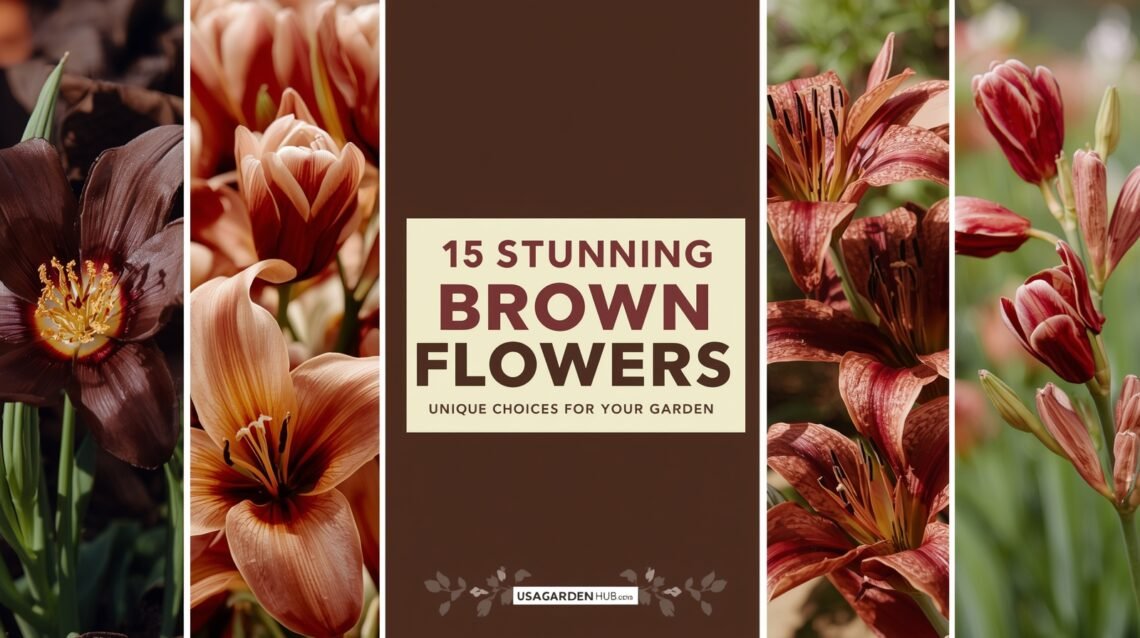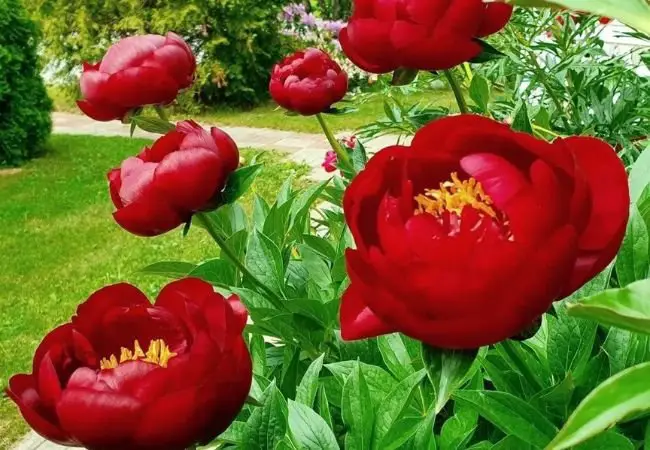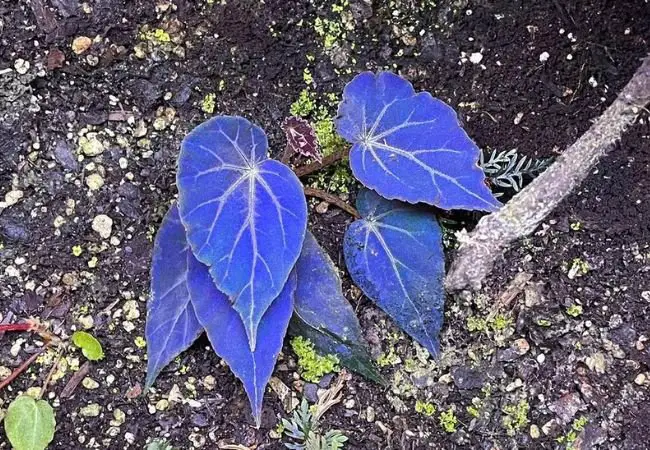Discover 15 stunning brown flowers like Chocolate Cosmos and Brown-Eyed Susan with care tips from Ashley Scott, a 10-year gardening pro. Perfect for USA gardens!
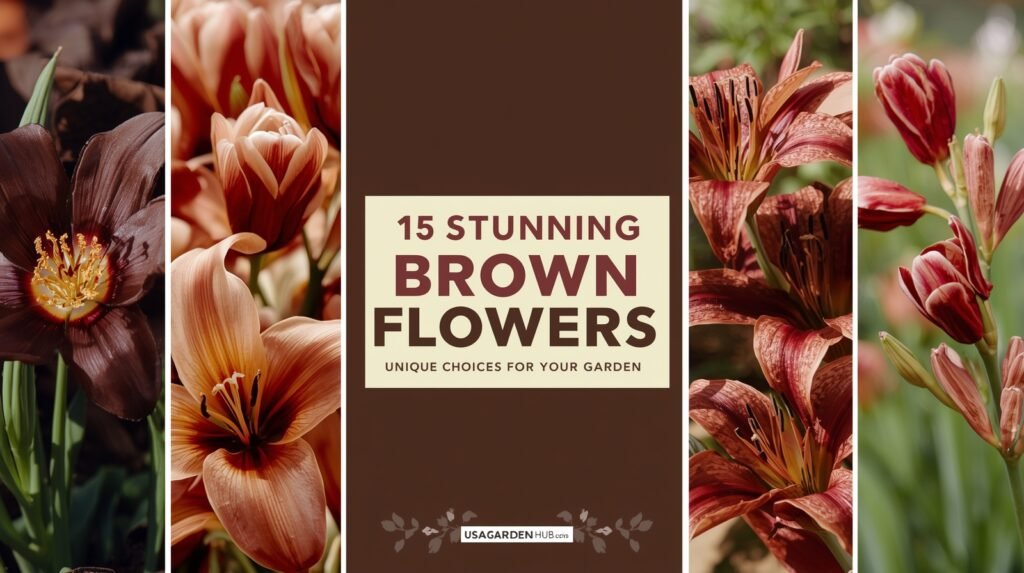
Hey there, plant lovers! I’m Ashley Scott, a gardening enthusiast with 10 years of experience transforming my USA backyard into a vibrant oasis. Brown flowers might not be the first to come to mind, but these earthy beauties bring warmth, depth, and sophistication to any garden, especially in fall or year-round displays. You requested a list of 15 stunning brown flowers, including specific ones like Chocolate Cosmos, Brown-Eyed Susan, and more, so I’ve crafted a curated selection that covers all your picks. These plants, ranging from perennials to bulbs, offer rich chocolate, bronze, and russet tones, perfect for borders, pots, or even spooky Halloween gardens (check my guide at USA Garden Hub). Let’s dive into the world of brown flowers!
Why Choose Brown Flowers?
Brown flowers add an unexpected elegance to gardens, blending seamlessly with greens, yellows, or purples for a cozy, autumnal vibe. They’re versatile for USDA Zones 3-10, depending on the plant, and many are low-maintenance, much like my succulent propagation projects. From chocolate-scented blooms to rustic seed heads, these plants attract pollinators, complement edible gardens, or enhance cut-flower arrangements. They’re also great for urban spaces, pairing well with 8 blooming plants that bees love.
15 Stunning Brown Flowers for Your Garden
Here’s a handpicked list of 15 brown flowers, including all your requested varieties, with their unique traits, care tips, and how I’ve used them in my garden. Each is USA-friendly and adds a touch of earthy charm.
1. Chocolate Cosmos (Cosmos atrosanguineus)
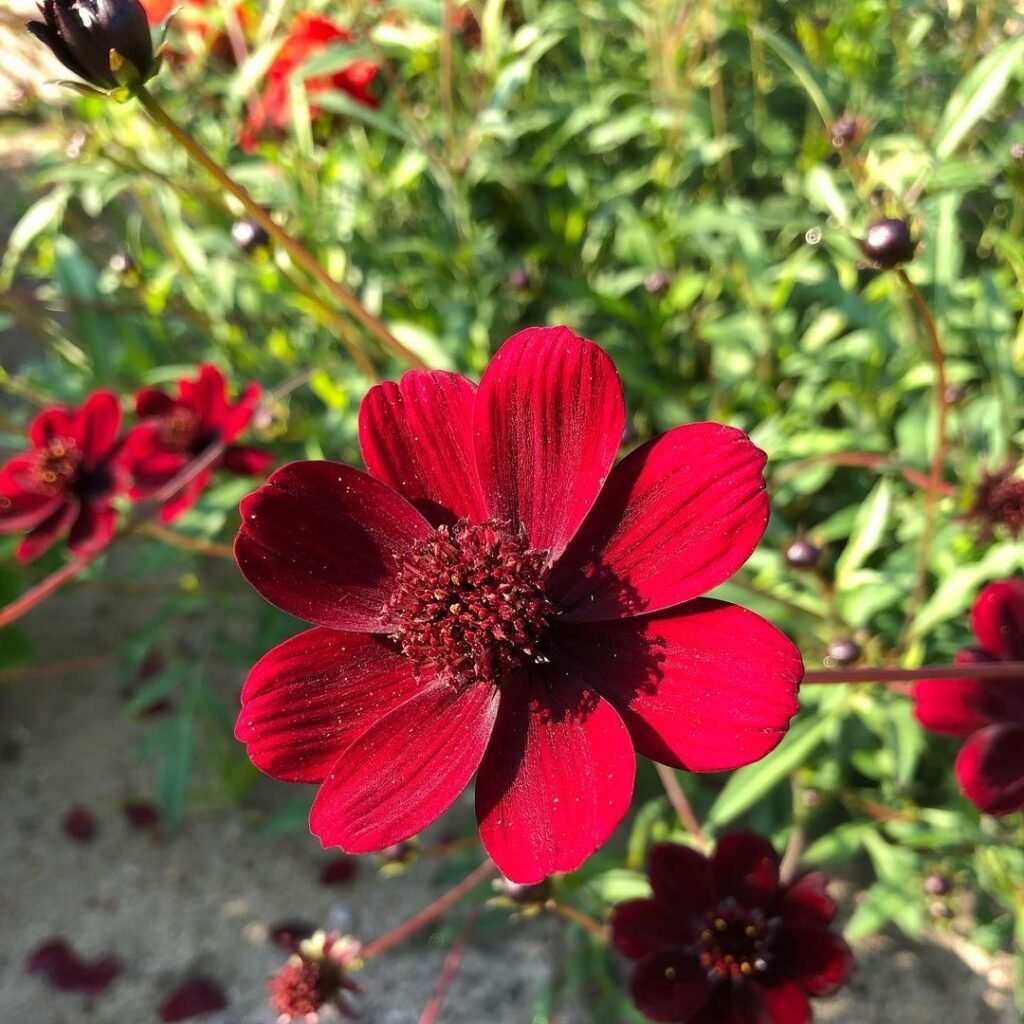
This Mexican perennial boasts velvety, dark maroon-brown flowers with a chocolate scent, blooming summer to fall. Missouri Botanical Garden
- Why It’s Stunning: Deep brown blooms smell like cocoa, perfect for sensory gardens.
- Care Tips: Full sun, well-drained soil (pH 6.0-7.0). Water weekly; deadhead for more blooms.
- Size: 1-2 feet tall, 1-1.5 feet wide.
- Zones: 7-10 (annual in colder zones).
- My Tip: I plant mine near the patio for the scent—mix with compost from my DIY compost bin for vigor.
- Fun Fact: Nearly extinct in the wild, it’s a rare gem for collectors.
2. Brown-Eyed Susan (Rudbeckia triloba)
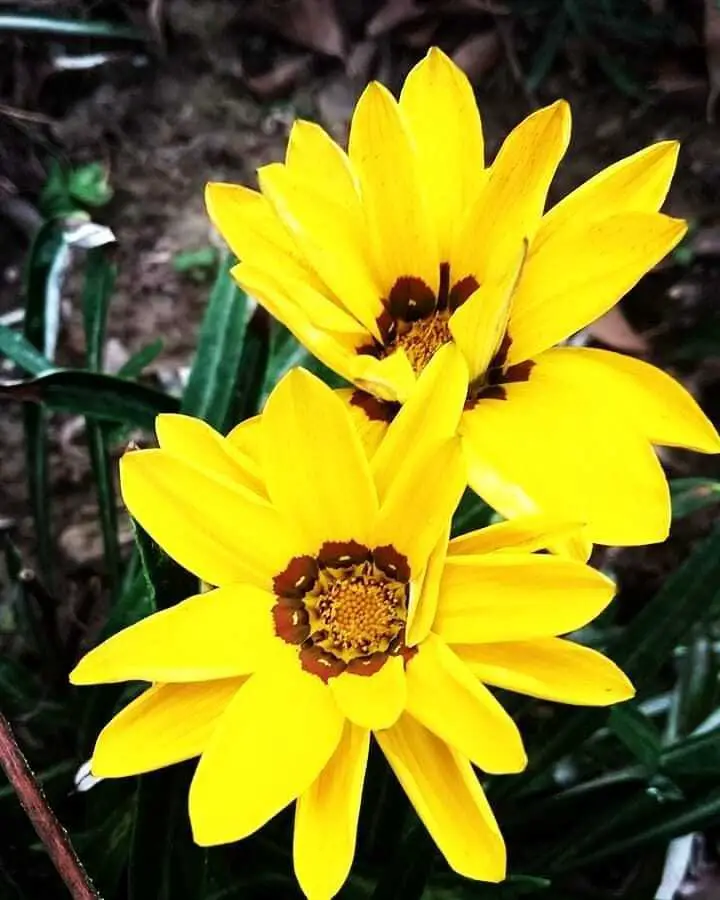
A native North American wildflower with small, yellow petals and dark brown centers, blooming late summer to fall. Gardening Know How
- Why It’s Stunning: Chocolate-brown eyes contrast with sunny petals, great for meadows.
- Care Tips: Full sun, average soil. Water 1 inch weekly; deadhead to extend blooms.
- Size: 2-5 feet tall, 1-2 feet wide.
- Zones: 4-8.
- My Tip: Pairs with my Black-Eyed Susans for a native duo—bees love it!
- Fun Fact: Self-seeds for easy spread in wild gardens.
3. Chocolate Lily (Fritillaria camschatcensis)
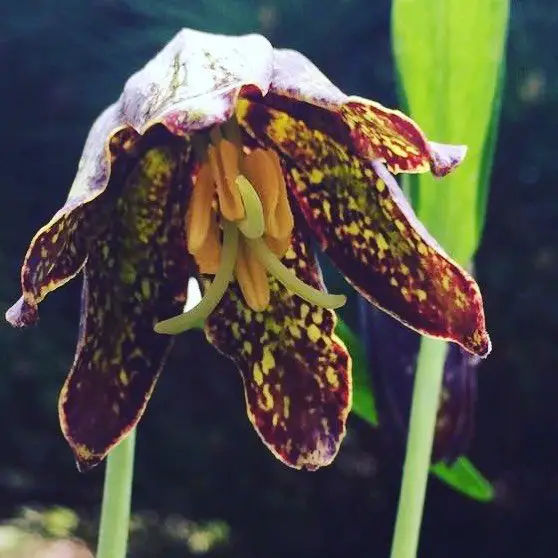
A Pacific Northwest native with nodding, bell-shaped, dark brown-purple flowers in spring. USDA Forest Service
- Why It’s Stunning: Bronze-black bells with a musky scent add wild charm.
- Care Tips: Partial shade, moist, well-drained soil. Water regularly; plant bulbs 4 inches deep.
- Size: 1-2 feet tall, 6 inches wide.
- Zones: 4-8.
- My Tip: I grow mine in a shady corner—perfect with ferns for a forest vibe.
- Fun Fact: Also called “skunk lily” for its odor, but pollinators don’t mind!
4. Mahogany Splendor Hibiscus (Hibiscus acetosella)
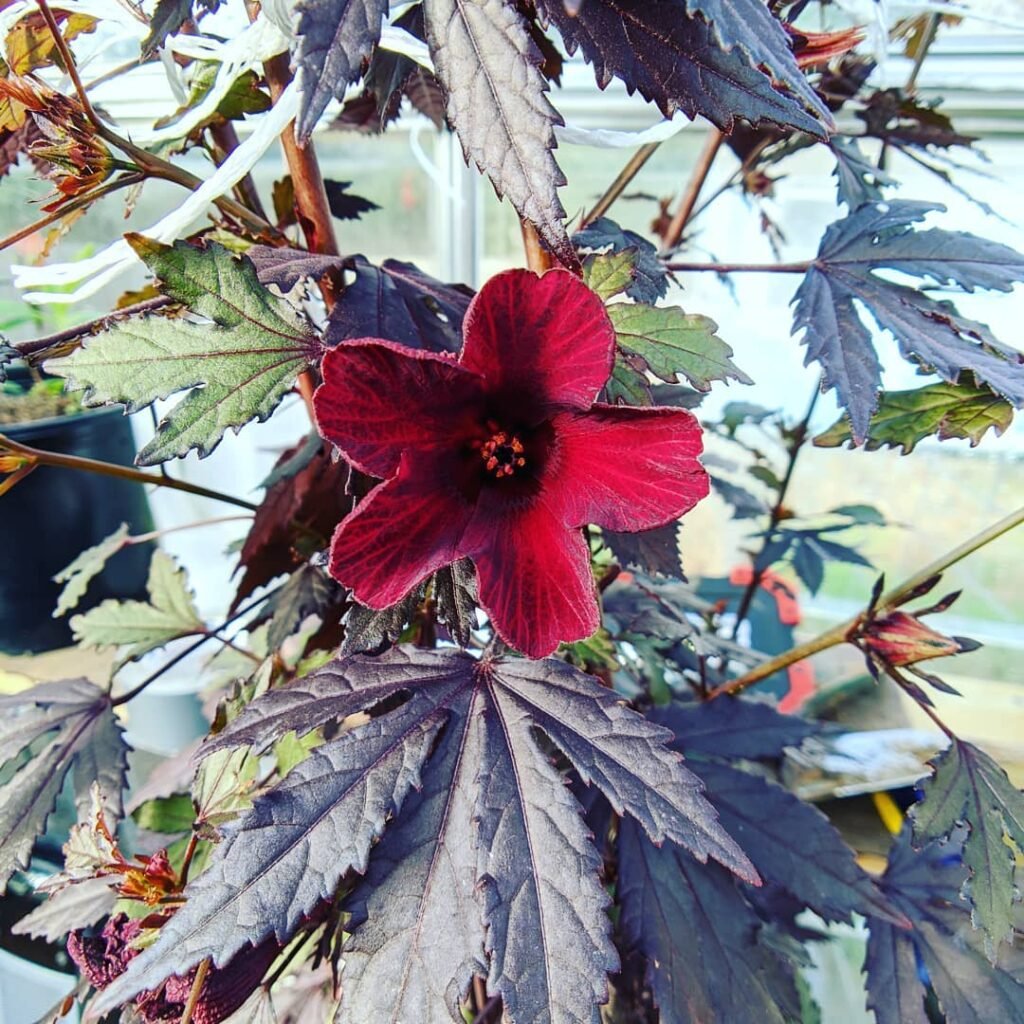
This tropical shrub features deep burgundy-brown foliage and red flowers, often grown for its leaves. Missouri Botanical Garden
- Why It’s Stunning: Mahogany leaves give a bold, chocolatey backdrop year-round.
- Care Tips: Full sun, rich soil. Water weekly; prune lightly in spring.
- Size: 3-5 feet tall, 2-3 feet wide.
- Zones: 8-10 (annual or indoor elsewhere).
- My Tip: I pot mine for patios—similar to my indoor hibiscus care.
- Fun Fact: Leaves are edible, adding a tangy twist to salads.
5. Cattail (Typha latifolia)
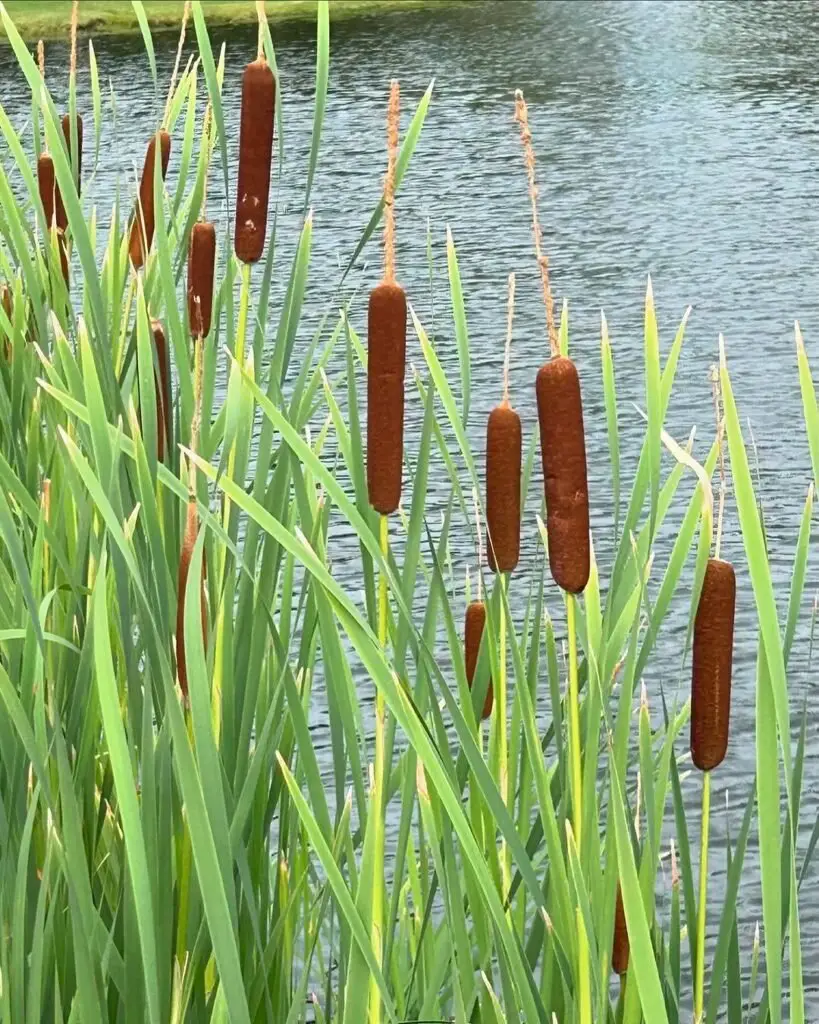
This wetland native has tall, brown, cigar-shaped seed heads that persist through fall. The Spruce
- Why It’s Stunning: Velvety brown heads sway in ponds or wet gardens.
- Care Tips: Full sun, wet soil or shallow water. No fertilizer; control spread.
- Size: 4-8 feet tall, 2-4 feet wide.
- Zones: 3-10.
- My Tip: I plant near my rain garden—great with native grasses.
- Fun Fact: Seeds provide bird food; roots are edible.
6. Brown Orchid (Cymbidium Kiwi Midnight ‘Geyserland’)
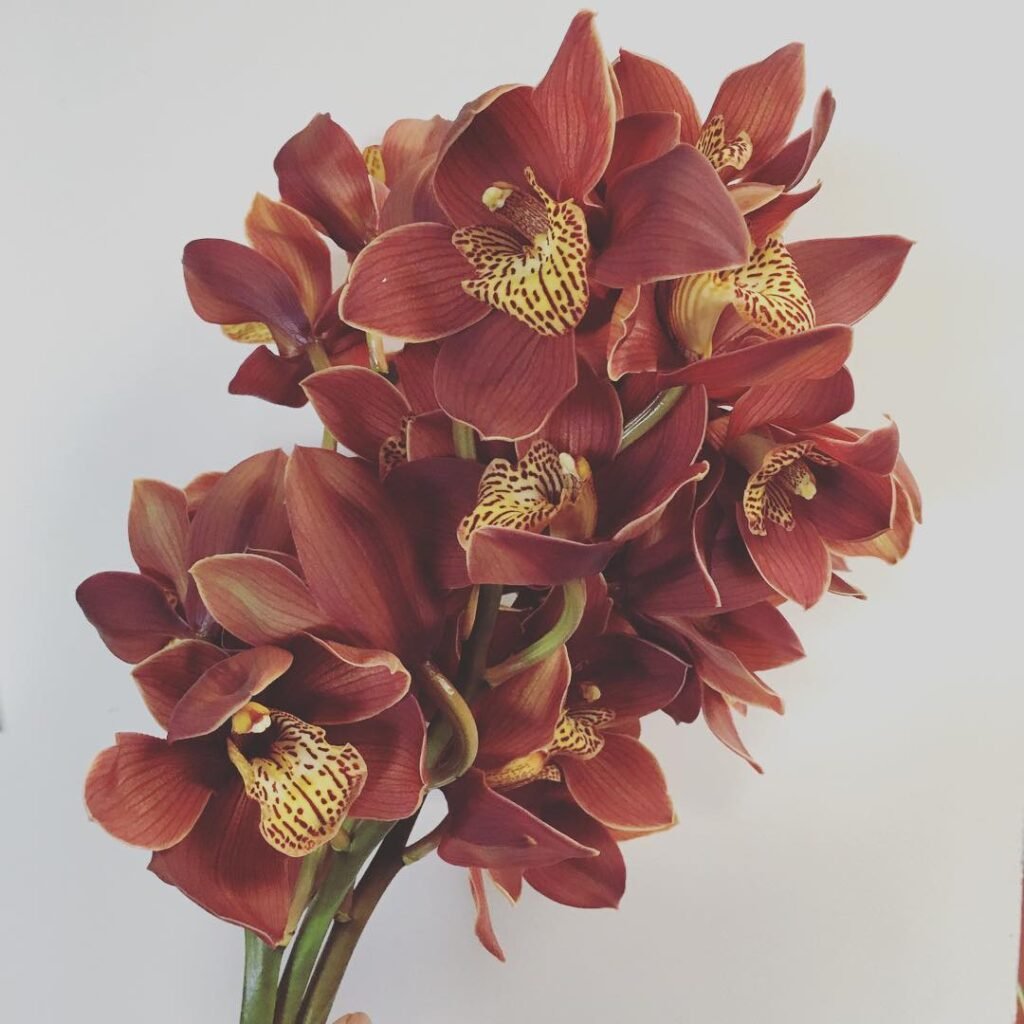
An exotic orchid with deep chocolate-brown flowers, blooming winter to spring. Royal Horticultural Society
- Why It’s Stunning: Rich brown blooms add elegance to indoor displays.
- Care Tips: Bright indirect light, well-draining mix. Water weekly; keep 50-70°F.
- Size: 1-2 feet tall, 1 foot wide.
- Zones: 10-12 (indoor elsewhere).
- My Tip: I grow mine indoors like cyclamen—mist for humidity.
- Fun Fact: Long-lasting blooms (6-8 weeks) make it a showstopper.
7. Chestnut (Castanea)
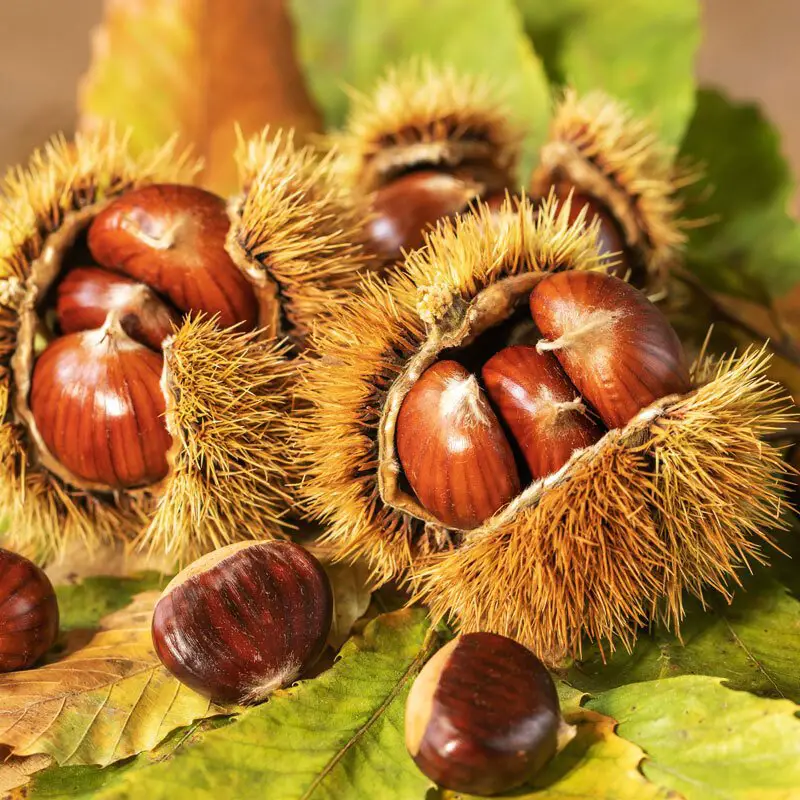
This tree produces spiky, brown burrs encasing edible nuts, ripening in fall. Missouri Botanical Garden
- Why It’s Stunning: Rusty-brown burrs add rustic texture to edible landscapes.
- Care Tips: Full sun, well-drained soil (pH 5.5-6.5). Water young trees; prune minimally.
- Size: 40-60 feet tall, 30-40 feet wide.
- Zones: 4-8.
- My Tip: Plant away from patios due to falling burrs—pairs with Haskap berries.
- Fun Fact: Nuts are a fall treat, roasted or raw.
8. Stapelia (Stapelia grandiflora)
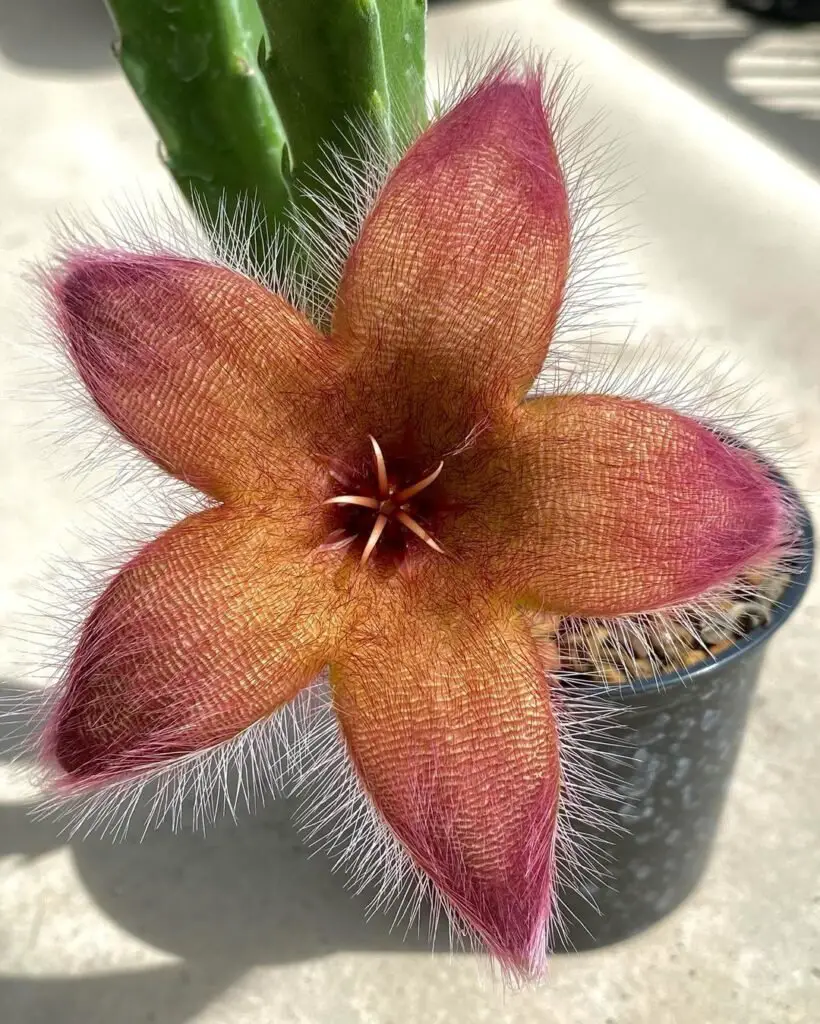
A succulent with star-shaped, brownish-purple flowers that smell like rotting meat. Gardening Know How
- Why It’s Stunning: Chocolatey blooms with hairy texture fit spooky gardens.
- Care Tips: Full sun, sandy soil. Water sparingly; keep above 40°F.
- Size: 6-12 inches tall, 1 foot wide.
- Zones: 9-11 (indoor elsewhere).
- My Tip: I grow it in pots like succulents—keep away from noses!
- Fun Fact: Smell attracts flies for pollination.
9. Brown Turkish Tulip (Tulipa ‘Brown Sugar’)
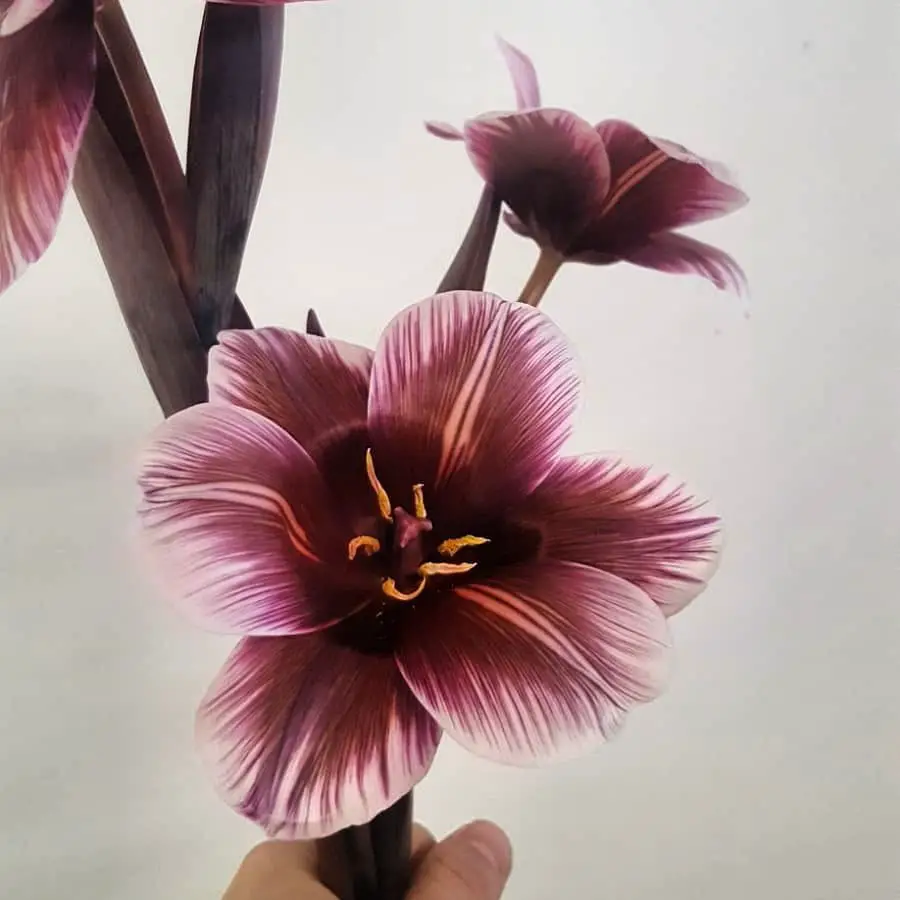
A bulbous tulip with caramel-brown petals, blooming in mid-spring. Royal Horticultural Society
- Why It’s Stunning: Warm bronze blooms glow in spring borders.
- Care Tips: Full sun, well-drained soil. Plant bulbs 6 inches deep in fall; water moderately.
- Size: 1-2 feet tall, 6 inches wide.
- Zones: 3-8.
- My Tip: I plant with Nerine flowers for a seasonal shift.
- Fun Fact: Fades to soft orange, adding dynamic color.
10. Hellebore (Helleborus ‘Double Ellen Picotee’)
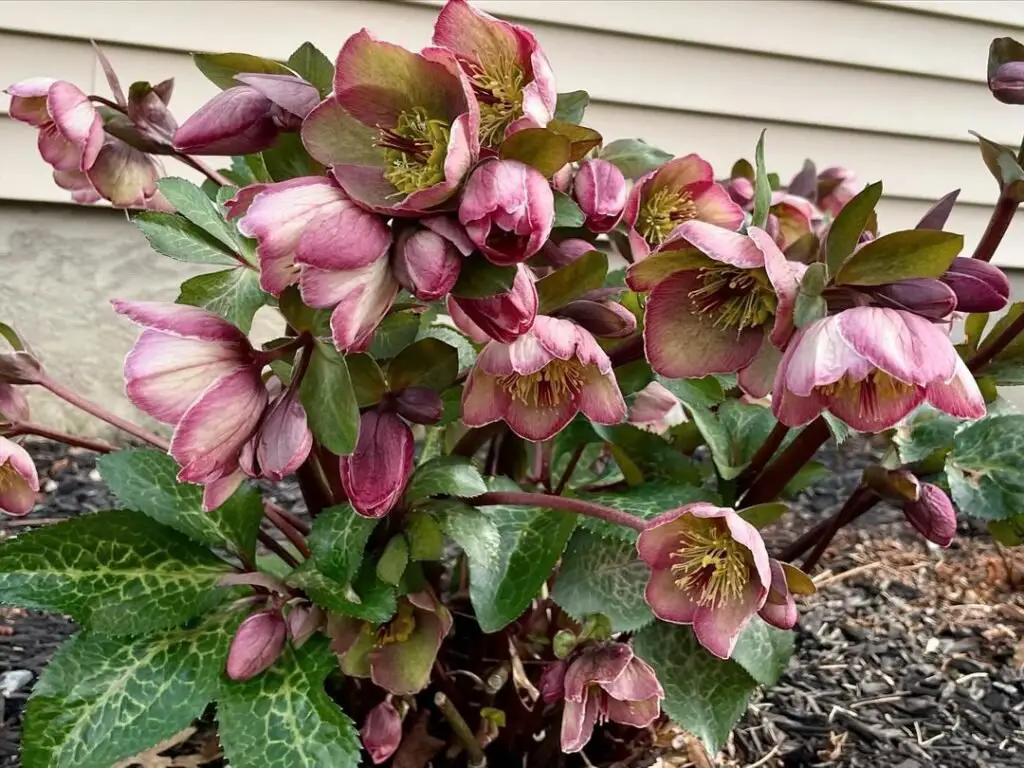
This winter bloomer has dusky brown to purple flowers with double petals, often with pink edges. The Spruce
- Why It’s Stunning: Earthy blooms brighten winter gardens.
- Care Tips: Partial shade, rich soil. Water weekly; mulch in winter.
- Size: 1-1.5 feet tall, 1-2 feet wide.
- Zones: 4-9.
- My Tip: Planted under trees for a moody vibe—similar to spooky plants.
- Fun Fact: Also called Lenten rose; toxic, so keep from pets.
11. Pineapple Lily (Eucomis comosa ‘Sparkling Burgundy’)
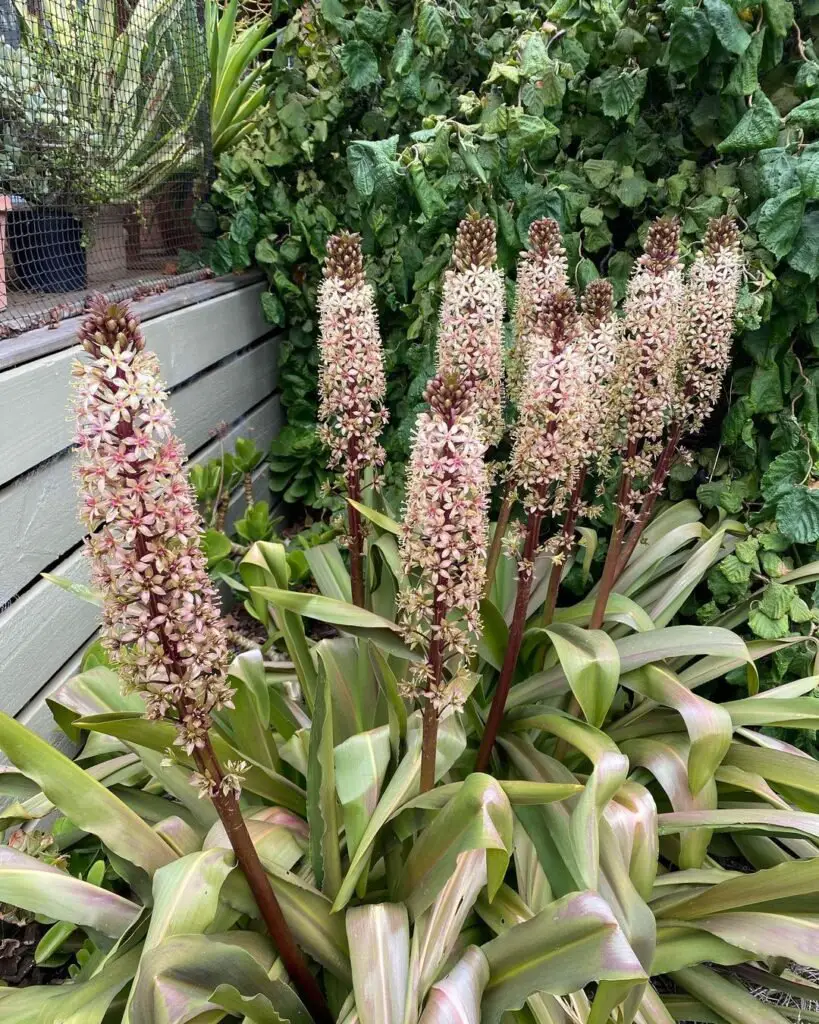
A bulb with burgundy-brown foliage and spiky, star-shaped flower heads in summer. Missouri Botanical Garden
- Why It’s Stunning: Chocolate leaves and pineapple-like spikes add drama.
- Care Tips: Full sun, well-drained soil. Water weekly; lift bulbs in cold zones.
- Size: 1-2 feet tall, 1 foot wide.
- Zones: 6-9 (indoor in colder zones).
- My Tip: I pot mine for mobility—great with microgreens.
- Fun Fact: Blooms last 6-8 weeks in summer.
12. Dried Lotus Pods (Nelumbo nucifera)
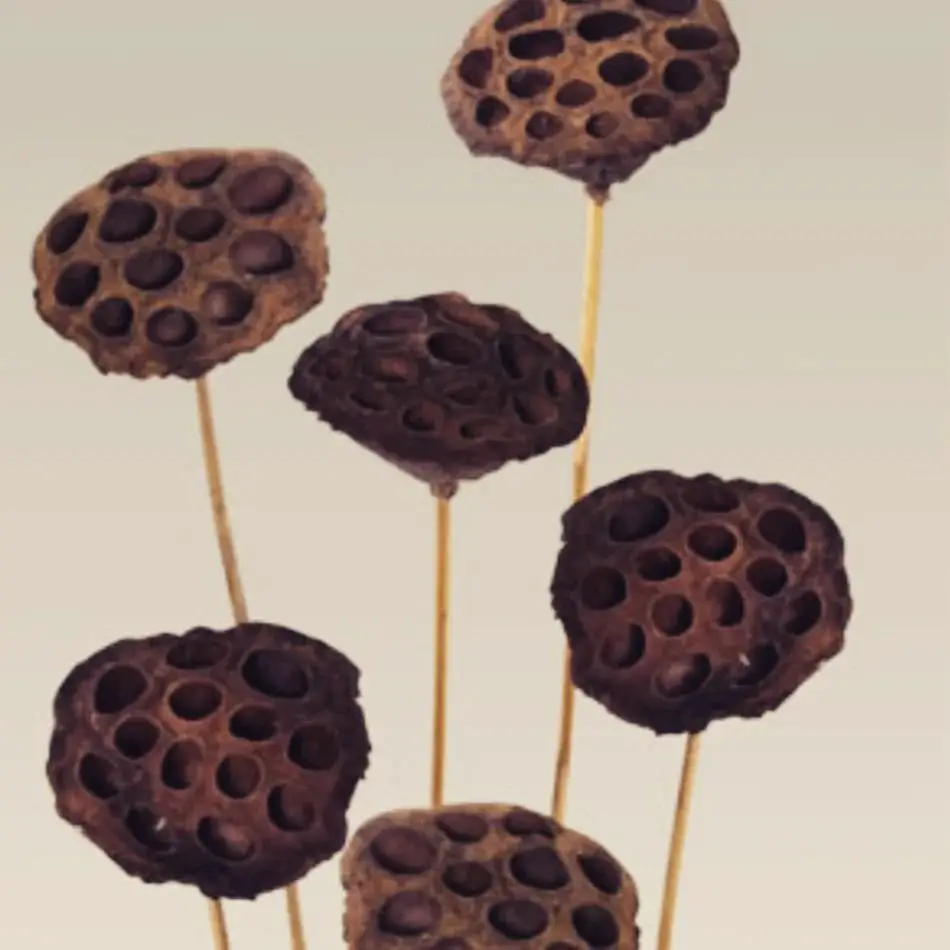
These dried seed heads from the sacred lotus have a woody, brown, honeycomb-like look. Gardening Know How
- Why It’s Stunning: Sculptural brown pods add rustic texture to arrangements.
- Care Tips: Grow in full sun, shallow water. Harvest pods in fall; no care needed for dried use.
- Size: Pods 3-4 inches wide; plants 3-5 feet tall.
- Zones: 4-10.
- My Tip: I use dried pods in wreaths—grow with cattails in wet areas.
- Fun Fact: Symbolizes purity in many cultures.
13. Knapweed (Centaurea)
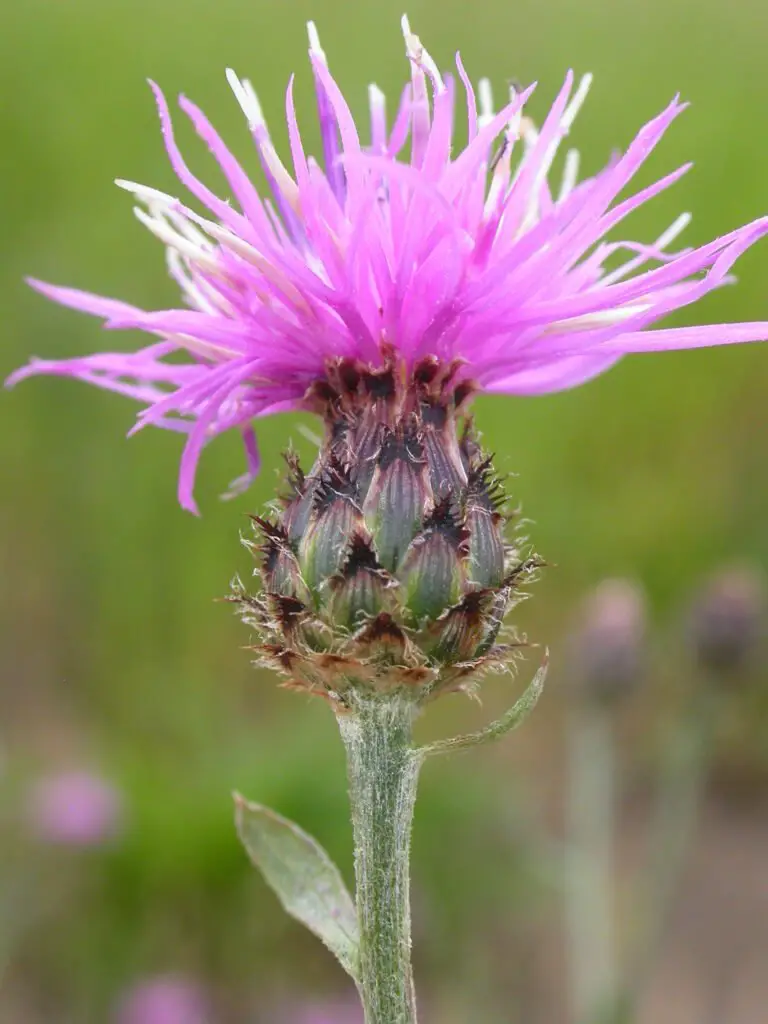
This wildflower has thistle-like, brown-tinged purple blooms in summer, great for naturalized gardens. USDA Forest Service
- Why It’s Stunning: Russet-brown centers add rugged beauty.
- Care Tips: Full sun, average soil. Water sparingly; deadhead to control spread.
- Size: 1-3 feet tall, 1-2 feet wide.
- Zones: 3-8.
- My Tip: I grow it in a meadow bed—pairs with Dalmatian Bellflower.
- Fun Fact: Can be invasive, so monitor growth.
14. Broom Corn (Sorghum bicolor)
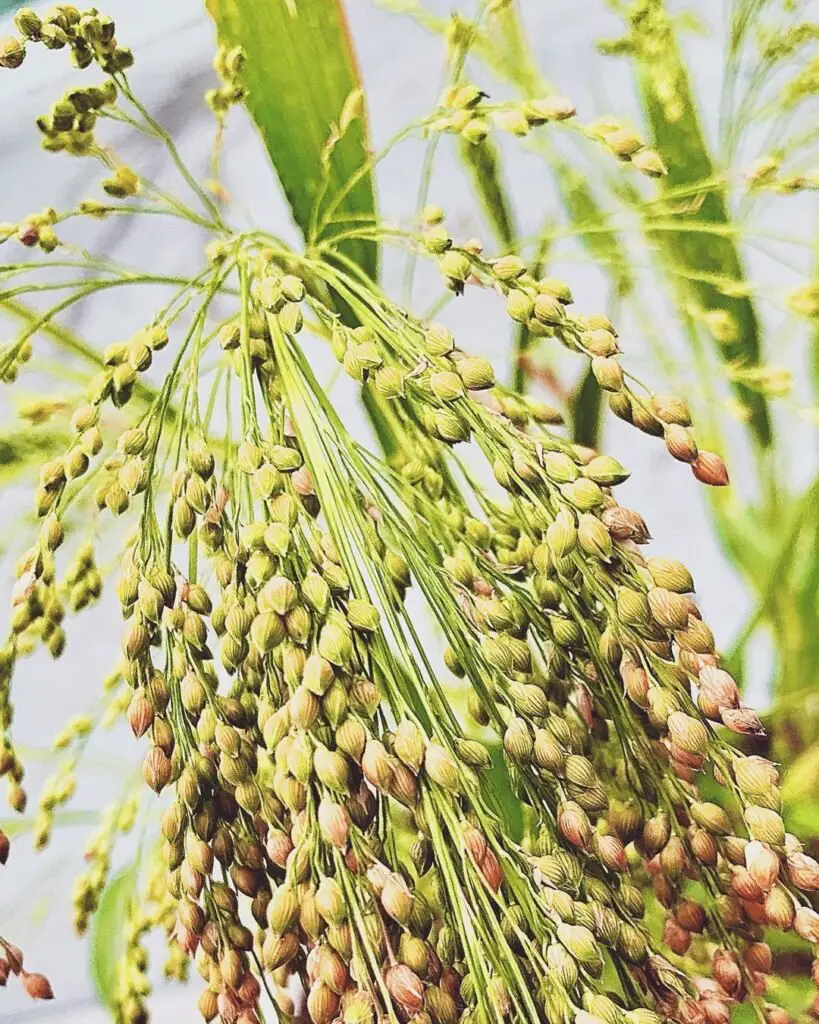
This ornamental grass has rich brown seed heads in fall, used in brooms or decor. The Spruce
- Why It’s Stunning: Tall, bronze seed heads sway for dramatic texture.
- Care Tips: Full sun, well-drained soil. Water 1 inch weekly; no fertilizer needed.
- Size: 6-10 feet tall, 2-3 feet wide.
- Zones: 8-11 (annual elsewhere).
- My Tip: I use it as a backdrop for spooky plants in fall.
- Fun Fact: Historically used for brooms, hence the name.
15. Pine Cones (Various Pinus species)
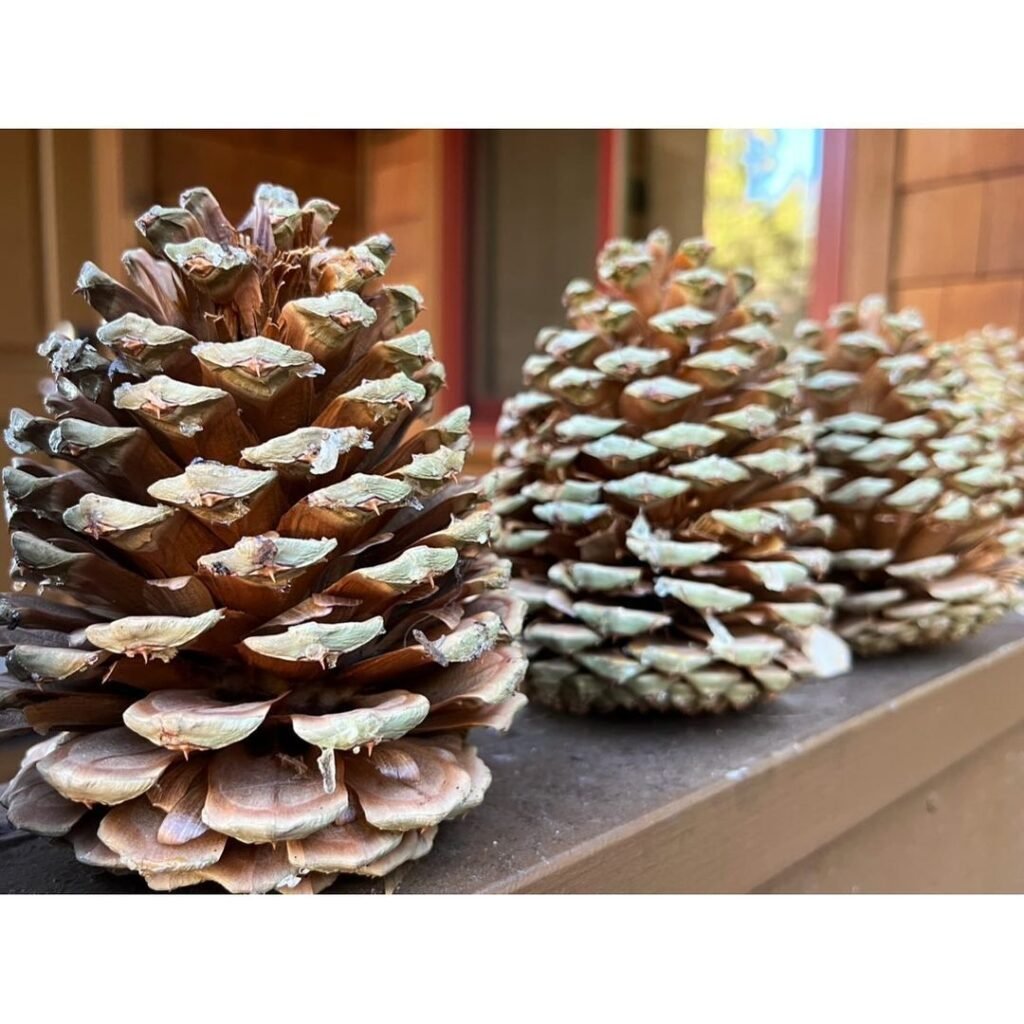
These woody, brown cones from pine trees add natural, earthy accents to gardens or crafts. USDA Forest Service
- Why It’s Stunning: Scaly brown cones bring woodland charm.
- Care Tips: Grow pines in full sun, well-drained soil. Water young trees; no care for fallen cones.
- Size: Cones 2-6 inches long; trees vary widely.
- Zones: 2-9 (species-dependent).
- My Tip: I scatter cones in beds with Haskap berries for texture.
- Fun Fact: Cones release seeds in heat, aiding forest regeneration.
Tips for Growing Brown Flowers
- Mix for Contrast: Pair browns with brights like coreopsis flower for pop.
- Use Containers: Pot up Chocolate Cosmos or Stapelia for urban spaces—move indoors in cold zones.
- Seasonal Planning: Plant bulbs like Brown Turkish Tulip in fall for spring, or Pineapple Lily for summer.
- Pest Control: Use neem oil (see my neem oil guide) for pests, but test on brassicas.
- Safety Note: Some (like Hellebore) are toxic—label for kids and pets.
Wrapping Up
These 15 stunning brown flowers, from Chocolate Cosmos to Pine Cones, bring earthy elegance to any USA garden. My Chocolate Lilies steal the show in my shady beds, and the Dried Lotus Pods make killer fall decor. Whether you’re in a city apartment or a rural yard, these plants are easy to grow and add unique flair. Which brown flower is your favorite? Share your garden vibes in the comments on USA Garden Hub!

